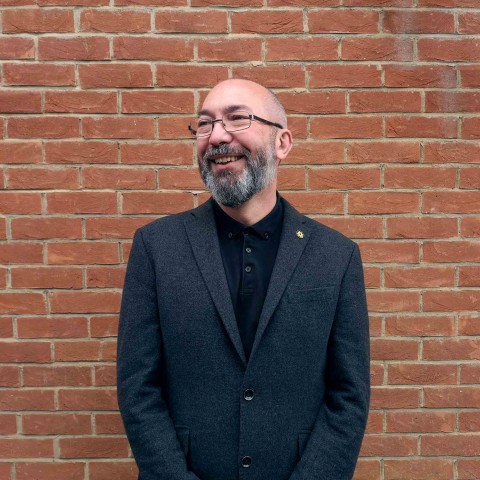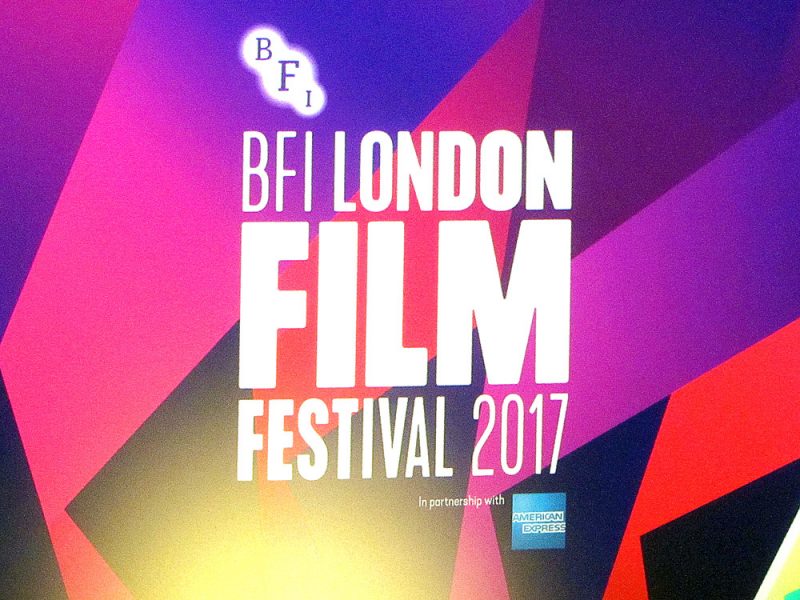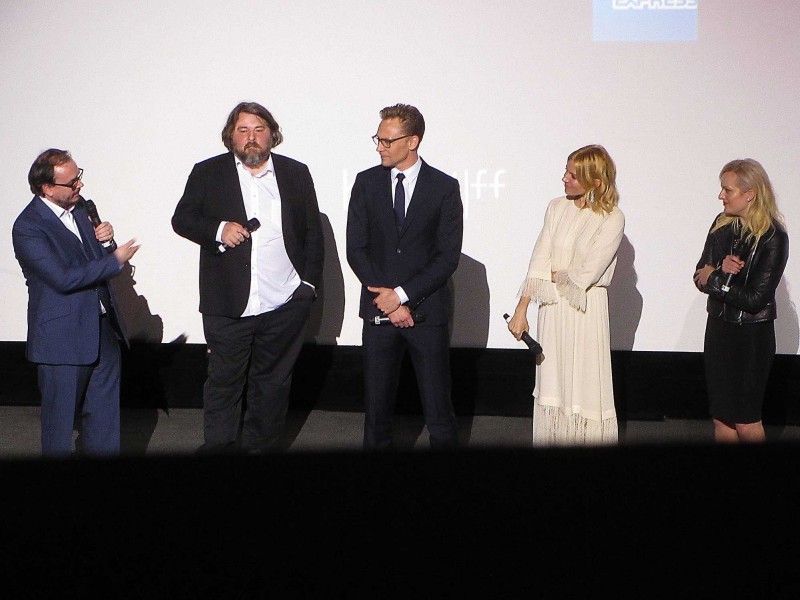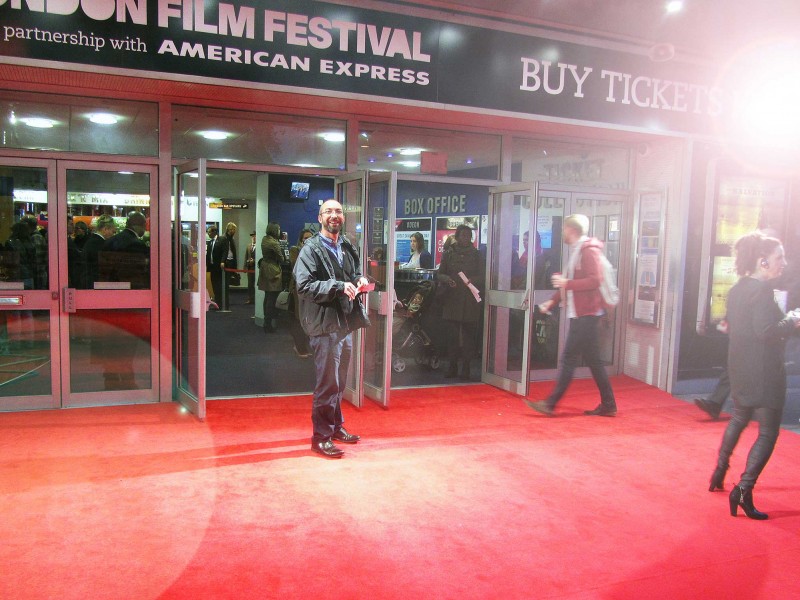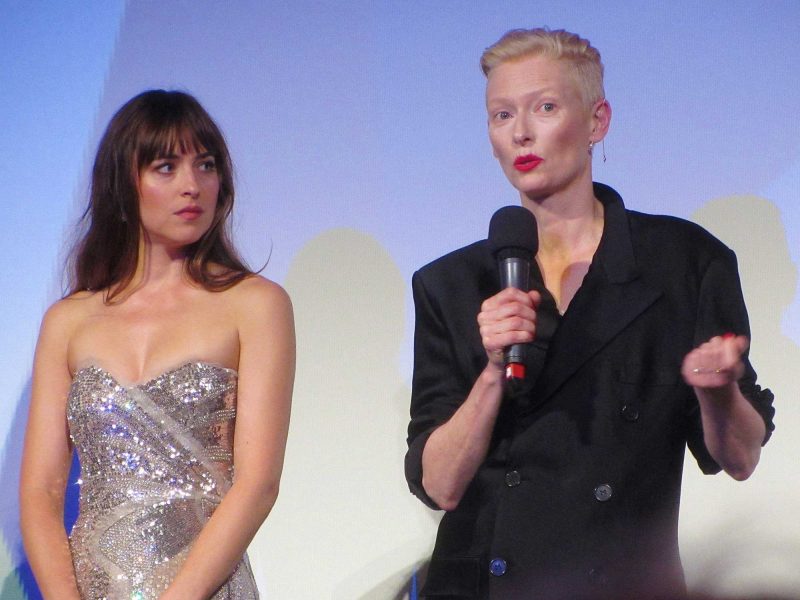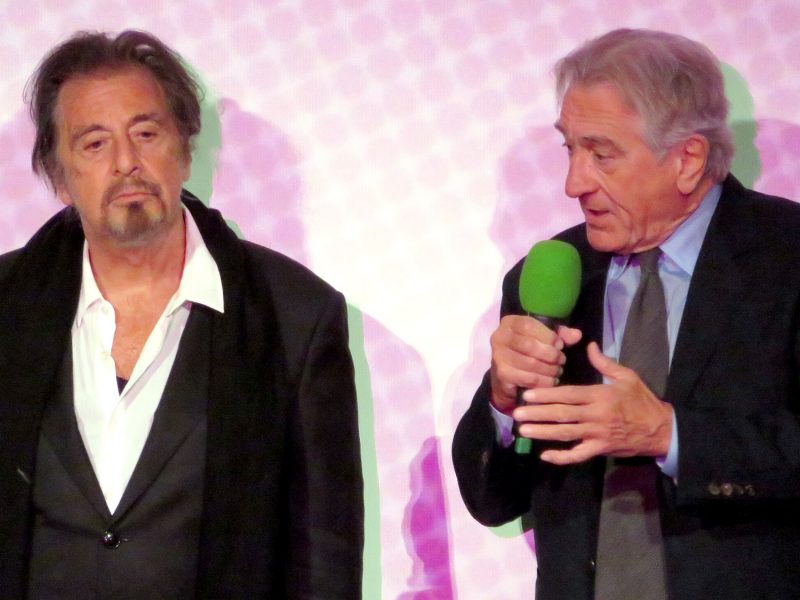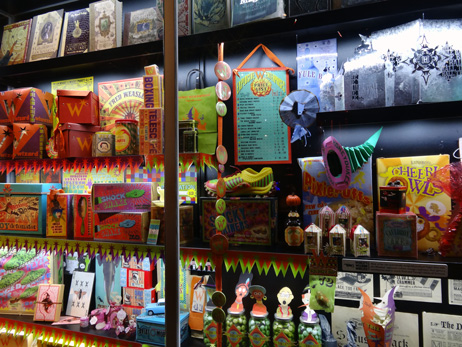This year’s BFI London Film Festival was as big as ever. Here’s Michael’s round-up of the 10 films he saw in 11 days, the fancy red carpets and the post screening Q&As.
London Film Festival 2018
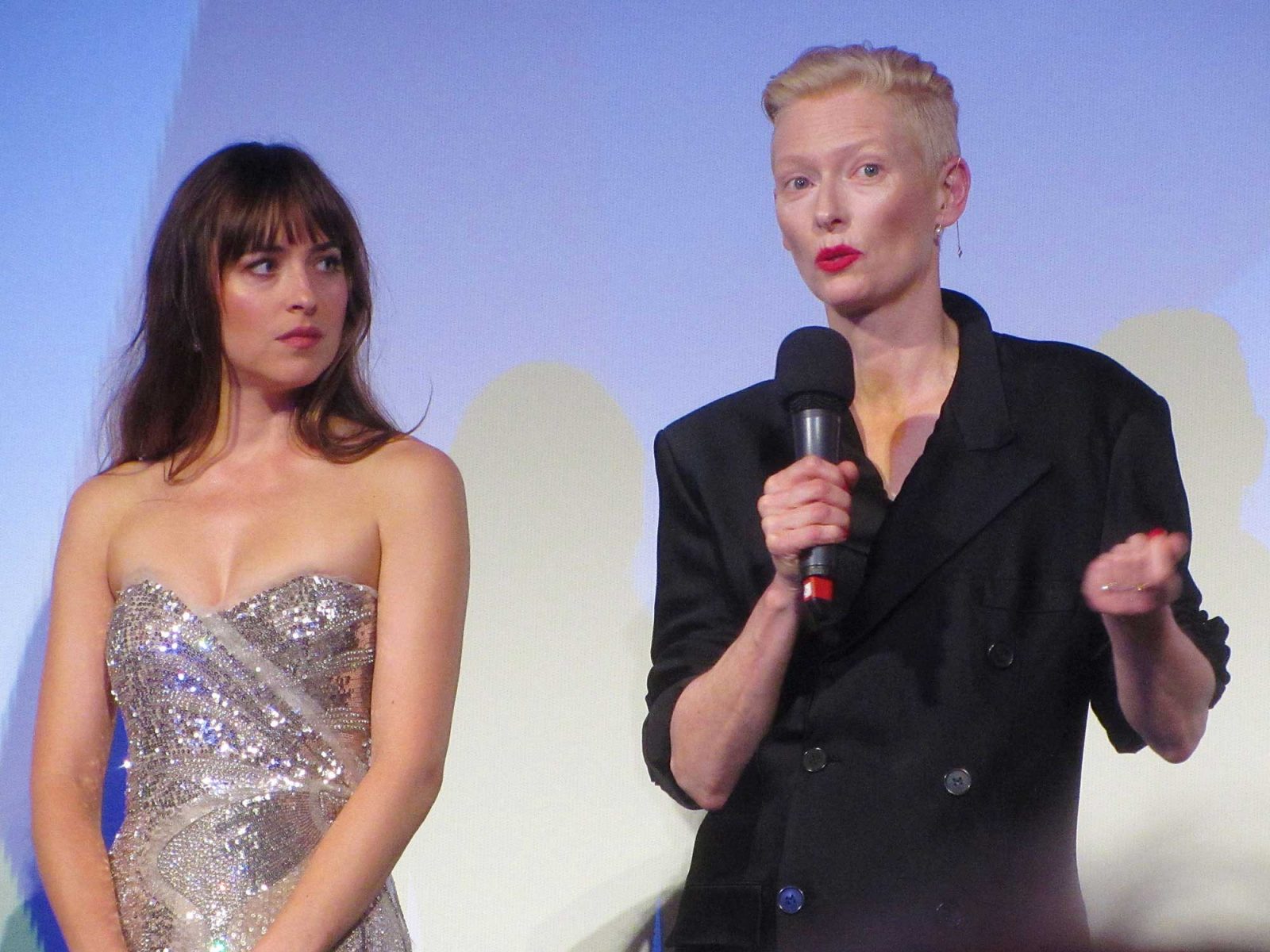
The annual BFI London Film Festival felt a bit different this year.
One factor was the absence of key venues. The two iconic Odeon cinemas in Leicester Square are currently building-sites. So some premieres had split screenings, with a red carpet affair in Leicester Square and a screening in the impressive temporary cinema in Embankment Gardens.
Another factor was a changing leadership. High-profile festival director Clare Stewart had taken a year out which must have reshaped the delivery team and their objectives.
And maybe the #MeToo movement was on everyone’s minds. It was during last year’s festival that the Weinstein revelations publicly surfaced and (almost) everyone was rightly careful to check their attitudes this year.
Oh, and the first film to be shown outside of London was quite a thing – Mike Leigh’s Peterloo quite rightly had to premiere in Manchester. Sadly I didn’t get to that one.
Whatever the reason, to me, the festival felt a little more subdued, and a little more reflective in its programming this year. I really enjoyed it.
I was pleased to have squeezed ten films into the eleven days (although that was half the number that my partner managed) but that frantic pace left little time to reflect on what I’d seen before a few hours sleep, a day’s work and then back to the screens for more. In an attempt to unpack what I saw I’ve written some notes. They’re mostly written for me but, as I do most years, I’m sharing them here in case anyone else is interested.
There are spoilers. Sorry.
Day 1
Happy New Year, Colin Burstead
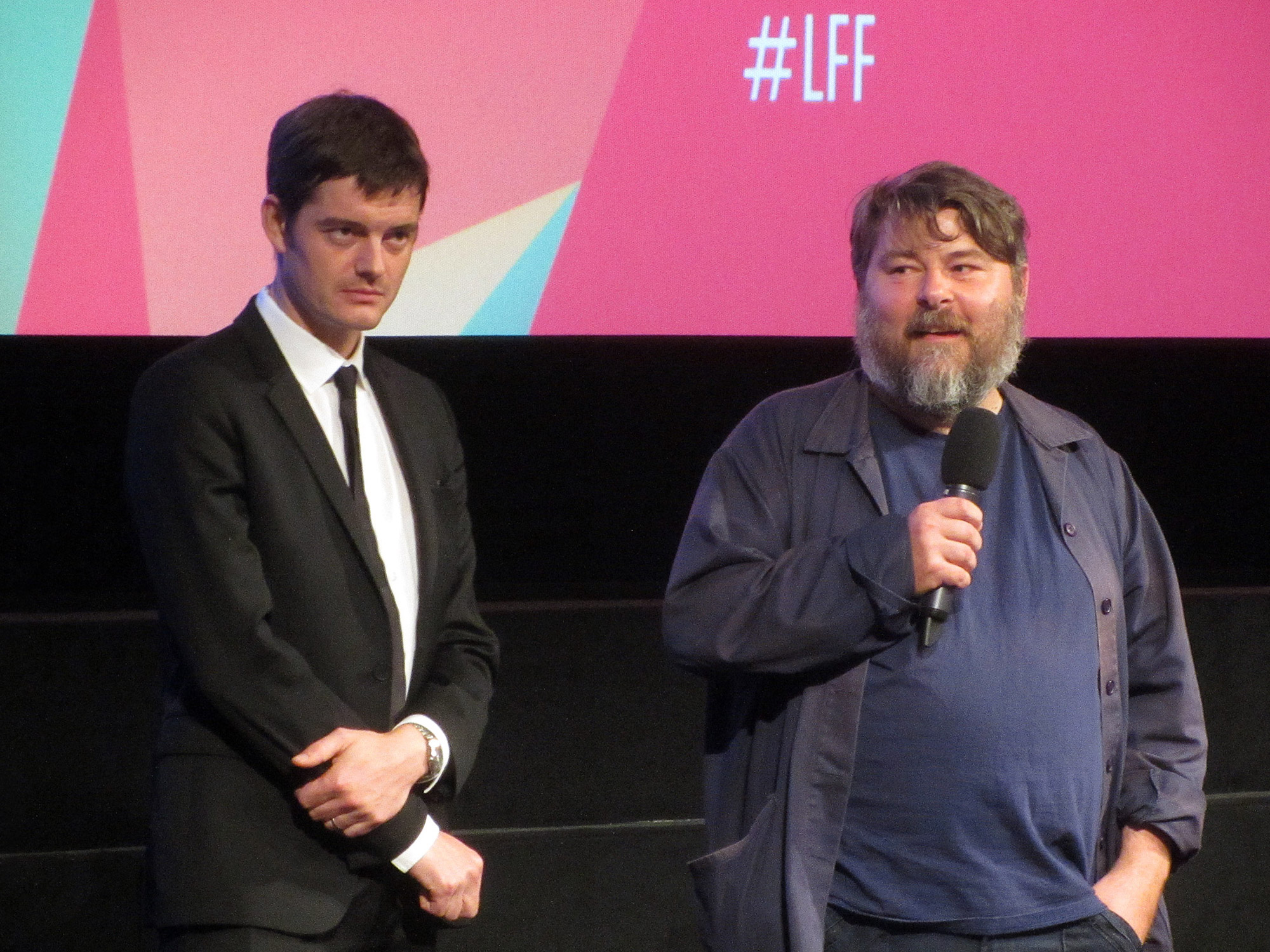
Sam Riley and Ben Wheatley
I love Ben Wheatley. He makes the very complicated process of film making seem so simple and fun, and he tackles such different genres in such accomplished ways.
Unlike previous film festival outings, High Rise or Freefire, Happy New Year, Colin Burstead is relatively low budget and is made for the small screen. It’ll be on the BBC over Christmas and there’s talk of Wheatley working on spin-off programmes with the film’s characters.
According to Wheatley, he first proposed a script, titled ‘Colin You Anus’. It’s an ensemble piece featuring many of his favourite actors and collaborators.
Colin (played by the ubiquitous Neil Maskell) has hired a minor stately home, in the West Country, and invited his family and assorted friends to see in the new year. His gesture falls flat as each of the family arrive with their own baggage after the ‘four fucking hours’ drive from their London homes. And his sister Gini (Hayley Squires) has invited their estranged brother (Sam Riley) to join the dysfunctional party.

It’s a wonderfully claustrophobic and uncomfortably true to life portrayal of real family lives. Half truths, egos, selfishness, insecurity turned to aggression, self-righteous indignation, barely hidden resentment and open-secrets all bubble and boil in the cauldron of this home away from homes.
My favourite scene is where matriarch Sandy (Doon Mackichan) arrives and immediately trips on the front step, spending the rest of the film seeking sympathy from a family who roll their eyes. They’ve seen it all before.
It’s a film of fast cuts between rooms as one-to-one conversations twist the truths and build the tensions, all underscored by Clint Mansell’s music. But there’s no single big revelation or magnificent set-piece just life played in fast forward.
It’s a film of tension without release. I loved it.
![]()
Day 2
Surprise Film: Green Book

Mahershala Ali and Viggo Mortensen
Each year, the festival features a surprise film. It really is a secret until the film starts – there weren’t even any opening titles this year. We settled in front of the huge IMAX screen of the Cineworld in Leicester Square as Interim Festival Director, Tricia Tuttle came on to tease us. “Who knows what the film is?” Nobody knew but there were a lot of guesses.
The film began and DreamWorks and Universal Pictures got their logo on screen. It was going to be a high-budget affair.
The film opens in a Scorsese-style single shot through an early 1960s New York night club. We’re introduced to Goodfellas-style Italian-American bouncer Tony Lip Vallelonga. He’s a family man with, not untypical of the time, racist views. He has a way with his fists and isn’t worried about making some hustling cash from mobsters.
When the club is ‘closed for repairs’ Tony is offered an unusual job. He’s to drive (and mind) the sophisticated, black classical pianist Dr Don Shirley (Mahershala Ali) on a challenging tour of the Southern States.
The film is a Hollywood telling of a version of a true story.
I hadn’t been aware of the film’s title at all before it started. But ‘Green Book‘ is heavily telegraphed through the script and refers to The Negro Motorist Green Book which provided alternative accommodation and eating stops under Jim Crow laws in the South.
The film is smooth and clever, it deals with some uncomfortable truths in a comfortable way. I’m very pleased to have seen it and I’m sure it’ll do well at the box office. Perhaps the biggest revelation (at least to me) was that Tony Lip was played by Vigo Mortensen. I didn’t recognise him at all, until he and Mahershala Ali came on to do a Q&A afterwards; his transformation is the stuff that awards’ juries love.
![]()
Day 4
Duplicate
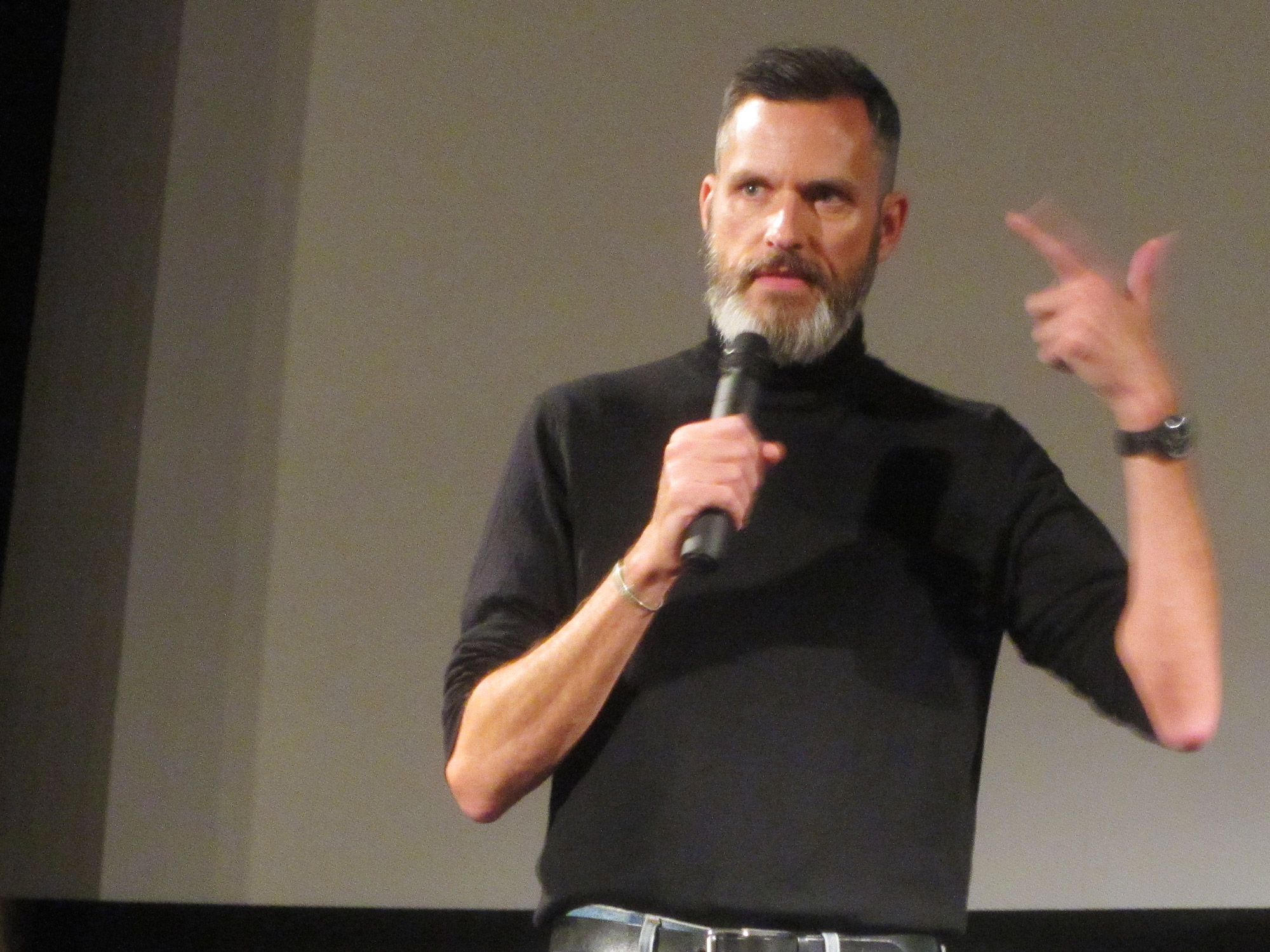
Director, Bill Oliver
Duplicate (or Jonathan if you’re searching for a reference prior to its screening at LFF) is described as sci-fi. I suppose it is because it deals with a ‘condition’ that doesn’t exist within science.
I saw it at the Prince Charles Cinema, with a post-show Q&A with Director Bill Oliver.
Spoiler warning…
We’re used to the film trope of two personalities occupying the same mind but what if they were actually two people sharing a body? Ansel Elgort (the star of Baby Driver) delivers an excellent, nuanced performance as two very different brothers who share a single body. The characters communicate via video messages left at the end of each of their ‘days’.
The film tackles some interesting themes around depression and the power of personality. When are you stronger – dealing with crises or being settled and happy?
The feel is a little like Duncan Jones’s wonderful Moon film. But without the abstraction of being away from everyday life, the Duplicate‘s story is complicated by the need for each brother to have a wildly differing personality. In turn that makes the separate interactions with other people all the less believable.
It’s an impressive first feature from Bill Oliver but like its choice of title, I’m not completely sure it knows what it wants to be.
Day 5
Life Itself
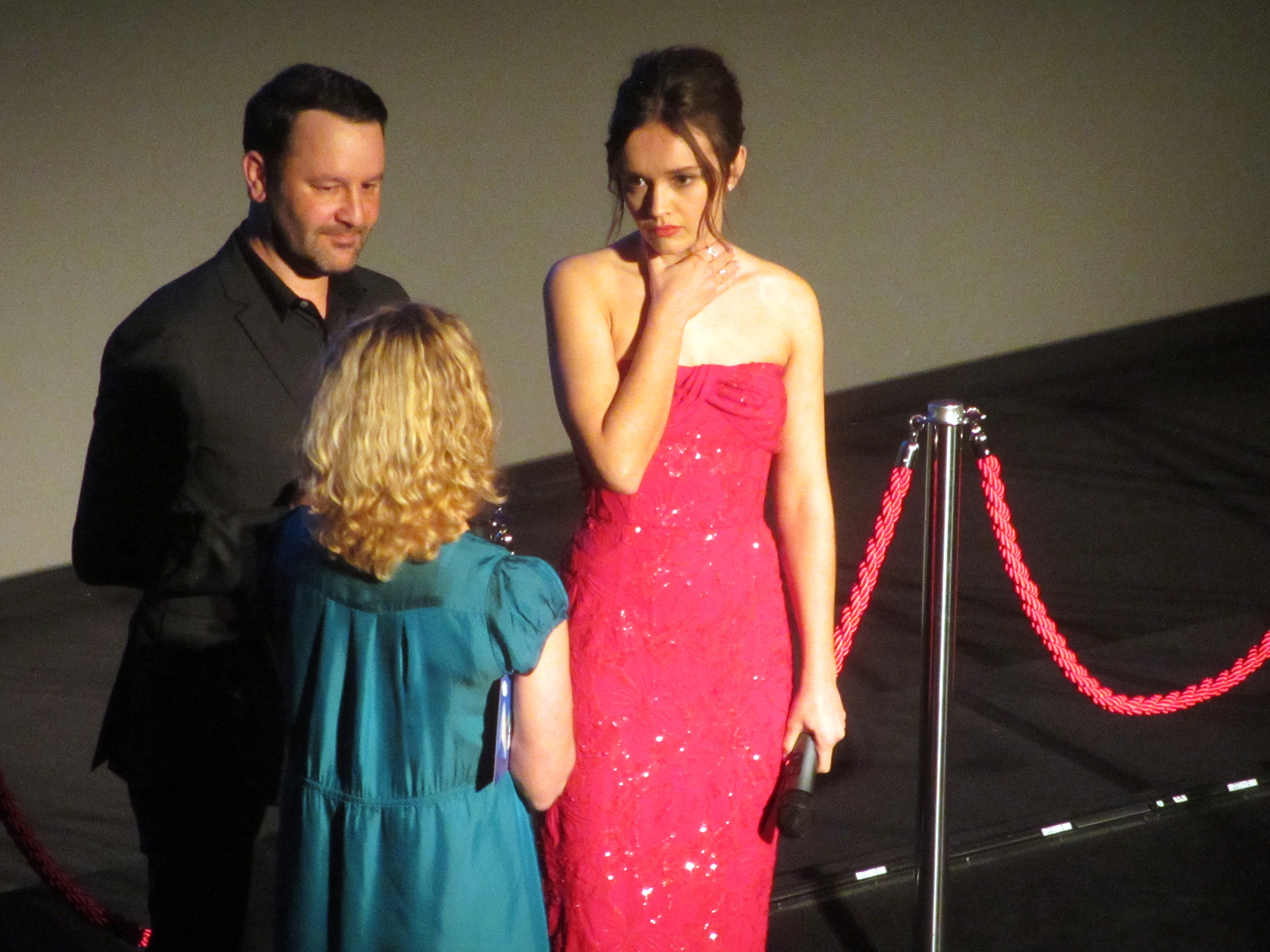
Writer/Director Dan Fogelman with Olivia Cooke
I arrived very early, at Cineworld, but Leicester Square was already in full film-premiere mode. Through the barriers I ambled along the red carpet, carefully steered away from ‘the talent’. Inside were dozens of uniformed staff to usher people away from the foyer and into to their seats.
Life Itself is a grand title for an ambitious film. It can afford to be because it’s written and directed by Dan Fogelman, the driving-force behind the multi-generational hit TV series This Is Us.
College sweethearts Will (Oscar Issac) and Abby (Olivia Wilde) begin a more settled life with a child on the way when a tragic event tears the story apart and rips through a timeline that crosses generations and national borders.
The story is told through interlocking chapters of time, each influencing the next. Although the passage of time doesn’t seem to propel the characters into any kind of future world. The closing set-up occurs between a book signing and a bus stop in what must be at least 2040. You’d have to be a real optimist to think there will be bookshops by the middle of this century. There definitely won’t be bus stops.
I loved the first 45 minutes. Oscar Isaac’s Will is the wonderfully unreliable narrator of his life with Abby. His perfect construction crumbles as he imagines the story from her perspective, and makes us question our own recall of a perfect past, or own reconstruction of the sleights we carry with us.
From there, the plot gets a little overblown, sappy and sentimental for me. But that’s OK, sometimes we all want complicated situations to have neat threads that tie up in a bow. If that’s what you’re after, Life Itself delivers.
Day 6
The Man Who Killed Don Quixote
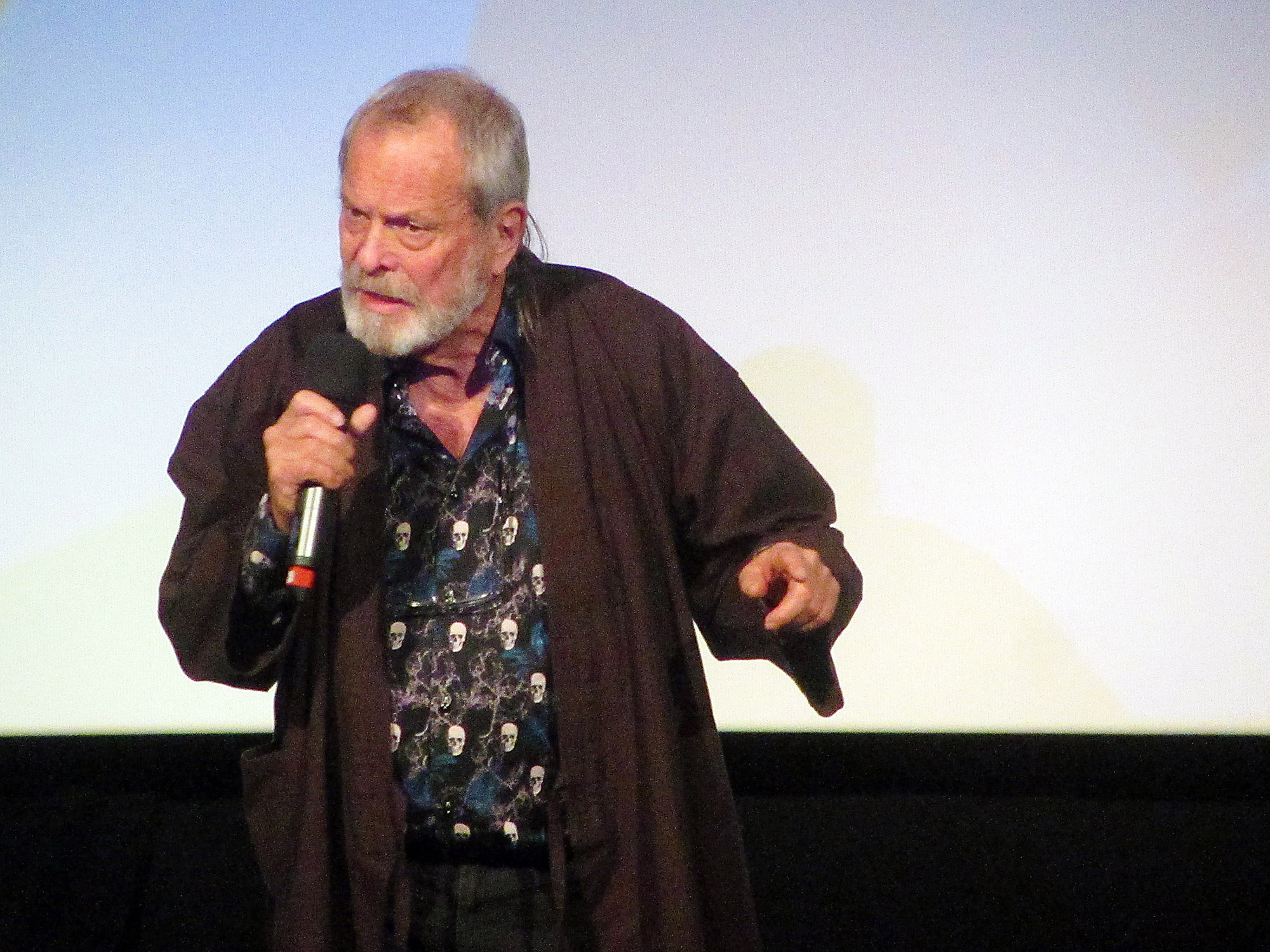
Terry Gilliam
It was a huge surprise to hear, earlier this year, that Terry Gilliam had finally finished making a Don Quixote film after 30 years and many expensive and well-documented failed attempts. The Man Who Killed Don Quixote was finally completed and shown at Cannes in May but, due to a protracted legal dispute with one of the companies that claimed to own the rights from previous attempts, the film hasn’t had a proper release yet.
I’d been really looking forward to seeing it and had even taken the afternoon off work to make sure I caught the early screening time of the London premiere, with Gilliam and some of the cast in attendance.
Maybe my expectations were just too high.
It’s an ambitious and typically Gilliam-esque film and I love Terry Gilliam’s films (like Brazil, Twelve Monkeys or even Zero Therom). But…
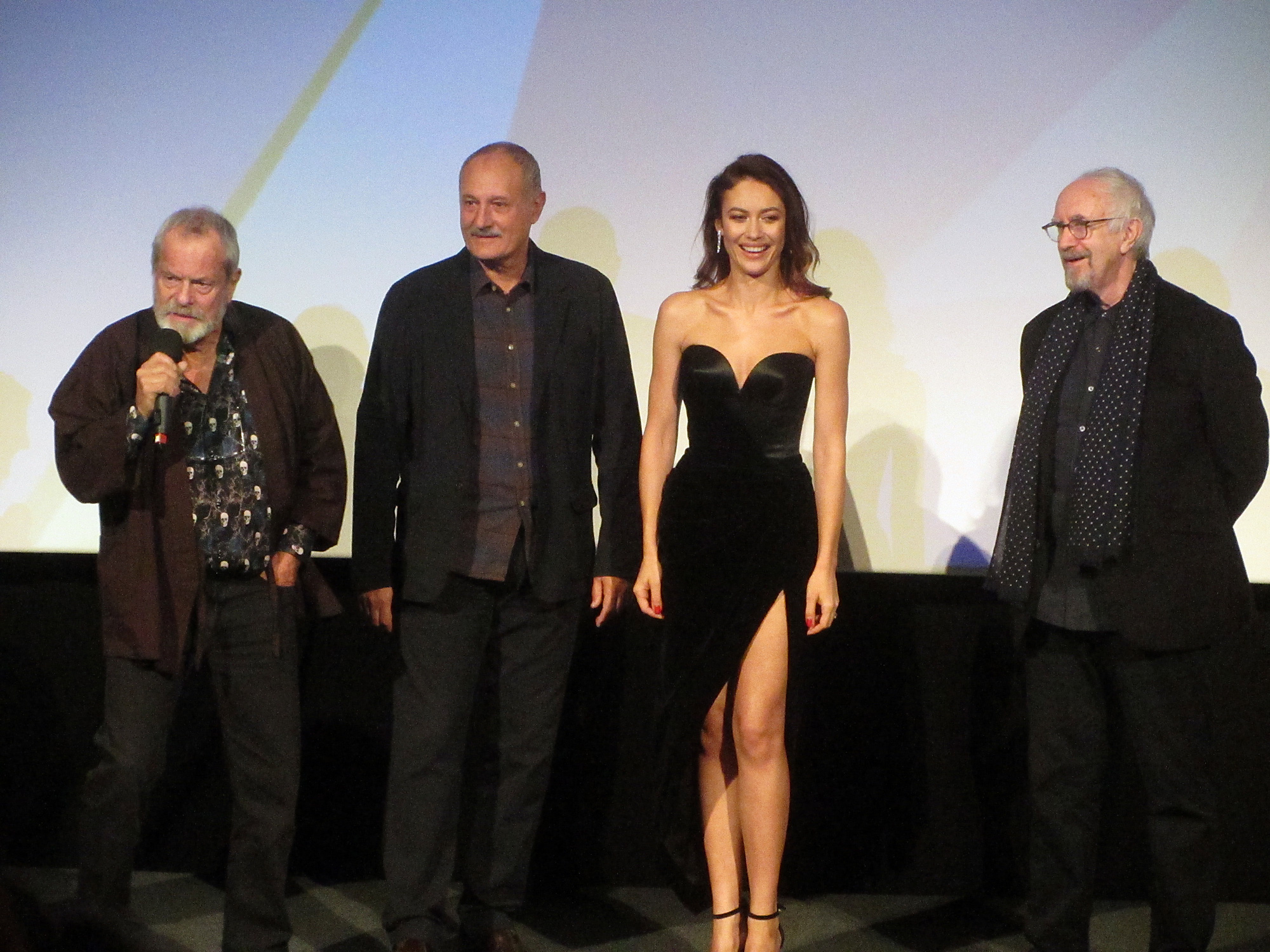
Despite the numerous re-writes and re-imaginings the film just felt stuck in a bygone era.
Maybe my opinion had already been influenced by Gilliam awkwardly introducing (‘Bond Girl’) Olga Kurylenko by saying “she also speaks”. The two main female characters in the film lack substance to such an extent that it’s difficult to tell them apart.
Or maybe the script had been reworked so often that it lost its spark.
There were some lovely moments and the scale of the production is impressive in itself.
Adam Driver did a great job in the lead role, vacated by Johnny Depp, Ewan McGregor and Jack O’Connell. And Jonathan Pryce was, as always, wonderful in the Quixote role, previously occupied by Robert Duvall, Michael Palin, and John Hurt.
I wish I could have liked it more.
Suspiria
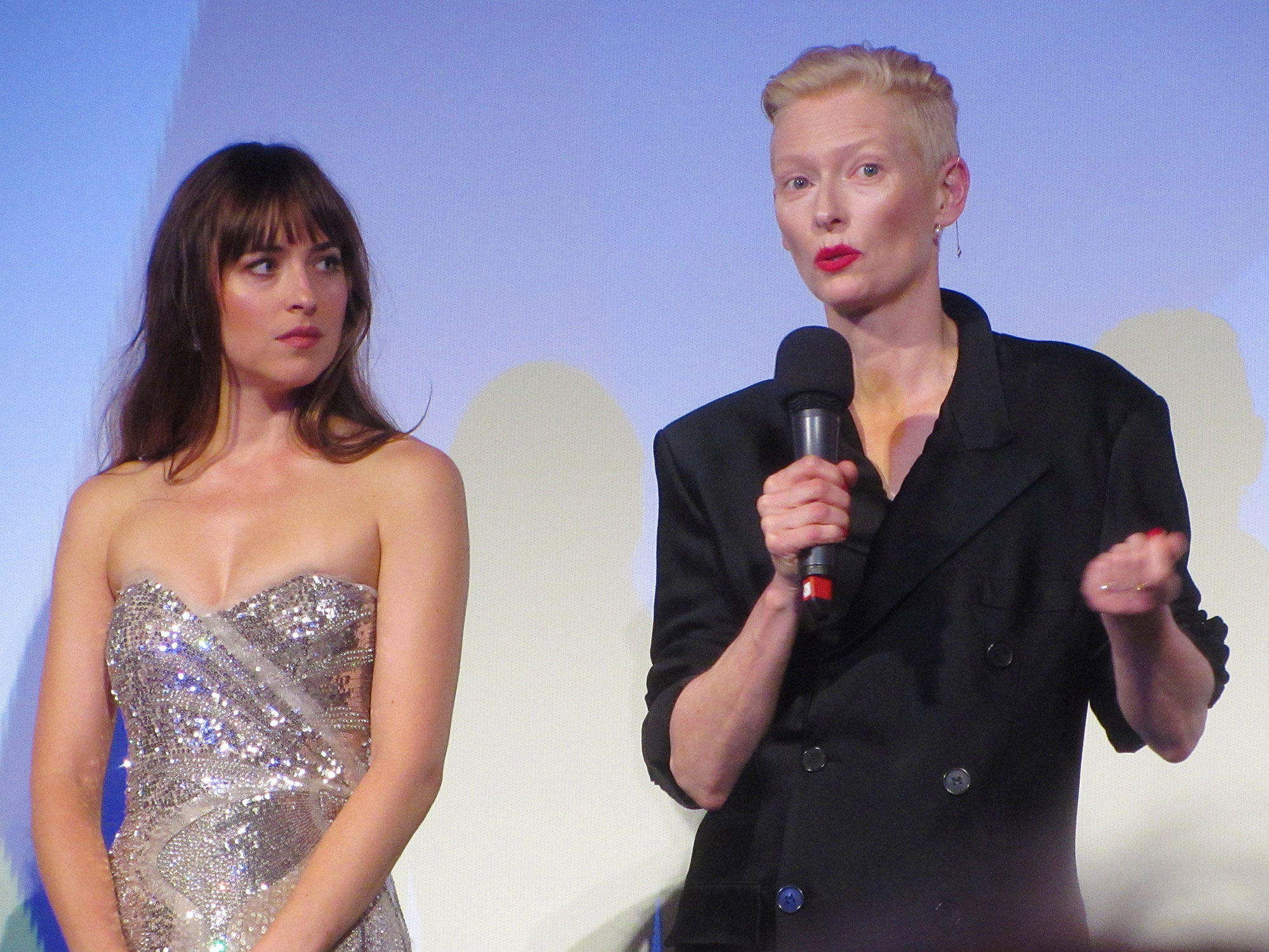
Dakota Johnson and Tilda Swinton
By an odd coincidence of circumstances, I saw Dario Argento’s 1977 version of Suspiria, for the first time, a couple of months ago. Initially I struggled with the absurdly mannered film-making – crazy angles and camera positions, mumbled dialogue, frantic editing, multiple lens choices in rapid succession. But the more I think about it, the more I like the unsettling mood it evoked.
This 2018 version is director Luca Guadagnino’s pet project. He bought the rights in ten years ago.
In stark contrast to Gilliam’s Quixote, Suspiria has an exceptionally strong female cast (even playing some of the male characters).
It’s a re-imagining rather than a remake, as Tilda Swinton was very keen to tell us in the pre-screening introduction. Perhaps most notably it is set in 1977 Berlin (the year of the original film) and makes the most of the politics and paranoia of the cold war, split city under the threat of regular terrorist attacks.
I enjoyed the film a lot especially the first twenty minutes that most closely resembled Argento’s filmmaking style. Dakota Johnson was particularly impressive as Susie Bannion who has to perform some challenging choreography and work through a complex spectrum of emotion as her character evolves through the film.
And the soundtrack, from Thom Yorke is interesting, especially the scoring of the Volk dance that somehow works as a dance piece that has no percussion.
And, of course, Tilda Swinton is wonderful. Although I do think her desire to play three, very different characters (two of whom have to be expanded and further developed to make sense of them within the story) might be the thing that pushes the film too far. It didn’t need to be 152 minutes long.
![]()
Day 8
The Favourite
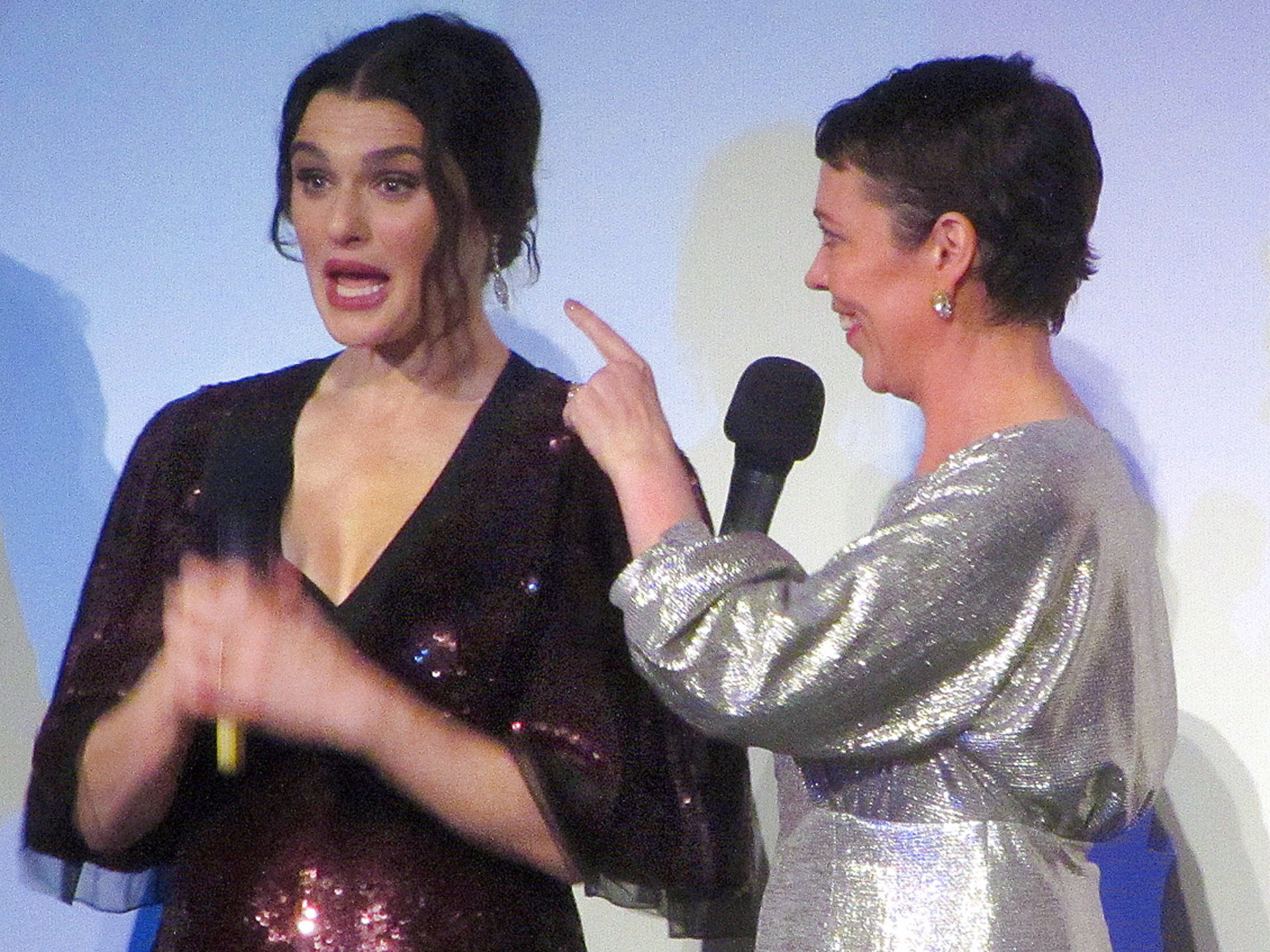
Rachel Weisz and Olivia Colman
Director Yorgos Lanthimos is fascinating. He has a style all of his own. Films, like The Lobster, feature performances so lacking in surface emotion that it’s often difficult to know what’s going on or what to think. They are compelling and disturbing.
This time last year I found myself walking down a red carpet between Olivia Colman, Emma Stone and Nicholas Holt who’d come to see Killing of a Sacred Deer, another mannered film from Lanthimos. They’d just been cast in his new film The Favourite.
Now Olivia Colman was on stage, at the Embankment cinema, with Rachel Weisz (Emma Stone had run off to a TV interview after doing the red-carpet thing in Leicester Square), introducing that new film, and talking about snogging and rabbits ‘oops, not that kind of rabbit’ Colman giggled before exiting stage right, pursued by the others.
It’s hard not to make comparisons between The Favourite and The Madness of King George (George III’s reign was around 60 years after Anne).
Sarah Churchill, Duchess of Marlborough (played by Rachel Weisz) is, we discover, the Queen’s lover, tending to her gout, abscesses and need for affection. She uses her influence to sue for funds for the war efforts of her husband (Mark Gatiss as John Churchill, 1st Duke of Marlborough).
Stone plays Abigail Masham who, having fallen on hard times, arrives at the court of Queen Anne to seek the favour of her cousin the Duchess. But finding a cool reception, sets out to ingratiate herself and to drive a wedge between the Duchess and the Queen.
It’s a surprisingly tender film, addressing Queen Anne’s depression (having lived through 17 failed pregnancies) with humanity. It’s also very funny, foul-mouthed and debauched, almost the opposite of Lanthimos’s previous films.
But he’s not lost his touch for mannered direction. My favourite of his tricks in this film was to use very wide, almost fish-eye lenses to show the vastness of the palace, whilst somehow retaining a natural feel to the actors in each scene. I’ve no idea how he did it but it’s very effective.
![]()
Day 9
Ladyworld

Amanda Kramer
Don’t mention Lord of the Flies. Someone in the audience did and they didn’t get away with it.
Ladyworld is like a female version of the Lord of the Flies. There is no way to avoid the comparison, even the archetypes and unseen threat are the same. But director Amanda Kramer thinks that’s a reductive analysis of her (excellent) first feature. And she was happy to tell the poor man who asked the first post-screening question.
The film’s premise is simple. A group of teenage girls are trapped with all exits blocked as the result of an earthquake. All they have to eat is the birthday cake from the party that brought them together in this house.
Through what might be days or hours, or weeks, the girls strip away societal conventions and revert to self-serving and often self-destructive personality types.
Two leaders emerge. At first, the practical do-gooder is ‘elected’ and only those who hold the conch crystal are allowed to speak. Olivia (Ariela Barer) tries to impose rules, rationing food and battery life on phones. But soon a second tribe takes over a bedroom, led by the nihilist sociopath Piper (Annalise Basso) and threatens the off-balance of power.

Amanda Kramer
As tensions rise and hope is exhausting, we learn of another presence in the house. In the basement people have seen ‘the man’. Is he real, is he an injured soul or is he a malevolent entity, the ever-present threat of rape to teenage girls? Kramer certainly sees ‘the man’ as representing that threat. In her post-film Q&A she describes the fear of rape as the central theme of the film.
It’s a darkly funny and deeply claustrophobic film. The soundtrack is provided not by music but by female breaths. It’s a masterstroke that elevates the work beyond the norm.
Kramer was hilarious, talking about it. She was both fiercely protective (and occasionally snappy) and simultaneously open to opinion and interpretation. She found fault in all of the characters and isn’t sure herself what the character of ‘the man’ should be or whether he should be real.
She did have funny stories about having to interview the young teenage girls, hour after hour in a cafe in Los Angeles.
After several days the staff came over… ‘we have to ask, we have a bet between us, what do you do for a living?’ As she explained, she liked that they were curious but she didn’t want to tell them, she wanted to leave them questioning.
![]()
Day 10
Assassination Nation
All the ideas, all at once, in one huge mash-up of an action film.
Assassination Nation is a satire of a nation beyond satire.
Set in Salem, this is a modern day retelling of mass hysteria and the scapegoating of opinionated women.
Layered on to that we have porn and sexting, transphobia, grooming of teenage girls, data hacking, the over sexualisation of children and fear of that emerging sexuality, vast generational divides, minor miscreants served blind-justice whilst the truly guilty remain, the abuse of all power, mob rule and, and, and.
It’s a mess of a film. Some analogies are shoved down your throat (the mob scream “Lock. Him. Up! Lock. Him. Up!” as the school Principal is unfairly judged) whilst other subjects are sensitively handled and left to be discovered. The scenes are littered with film references and knowing nods. The style of the film jumps between Heathers and The Purge, skipping many beats.
I loved it.
I particularly liked what felt like a very natural relationship (and use of phone chat and social) between the teenage girls, one of whom we incidentally discover to be trans.
At the end of the film, amidst the death and the devastation of a town that lies in ruins, the unwitting catalyst to all the madness is finally revealed. Asked why they did it, they reply “For the lulz.” It’s a neat summation of why this can be a terrifying time to be alive.
![]()
Day 11
Stan and Ollie
I was back at the temporary Embankment screen for the festival’s closing gala screening of Stan & Ollie. Everyone was dressed in bowler hats and there was a hat and programme on every seat – nice.
The screening started late as (I think) we had to wait for director Jon S. Baird to get there having first wowed the photographers in Leicester Square.
But before Baird got to speak, we had speeches and thanks to sponsors, and an announcement from BFI CEO Amanda Nevill that Clare Stewart would not be returning. Interim director Tricia Tuttle would be filling Clare’s big shoes, dressed in her own sparkly silver cowboy-boots.

Writer Jeff Pope looks on as Director Jon S. Baird reads his speech from his phone.
Baird had obviously had a busy day and hadn’t had time to charge his phone so when he did arrive and introduced this world premiere screening of his film (via notes on his phone) he gave us a panicked countdown to his battery life. It hit 1% as he finished his thanks and we settled into the comfort of a proper Hollywood tale, told with funding from the BBC.
The very long opening shot (with a couple of masked cuts) follows the pair on an elaborate walk, in and out of doors, through movie lots and onto the set of their latest film. It’s an ambitious and impressive beginning, paying homage to the great directors. We learn that Steve Coogan’s Stan Laurel wants to renegotiate their contracts but John C. Rielly’s Oliver Hardy has gambling and multiple marriage habits that need maintenance. Threatening an ultimatum, and assuming that Hardy won’t stay if Laurel leaves, Stan walks and waits. And waits.
It’s the end of a beautiful friendship, or at least the closing of that film duo’s chapter.
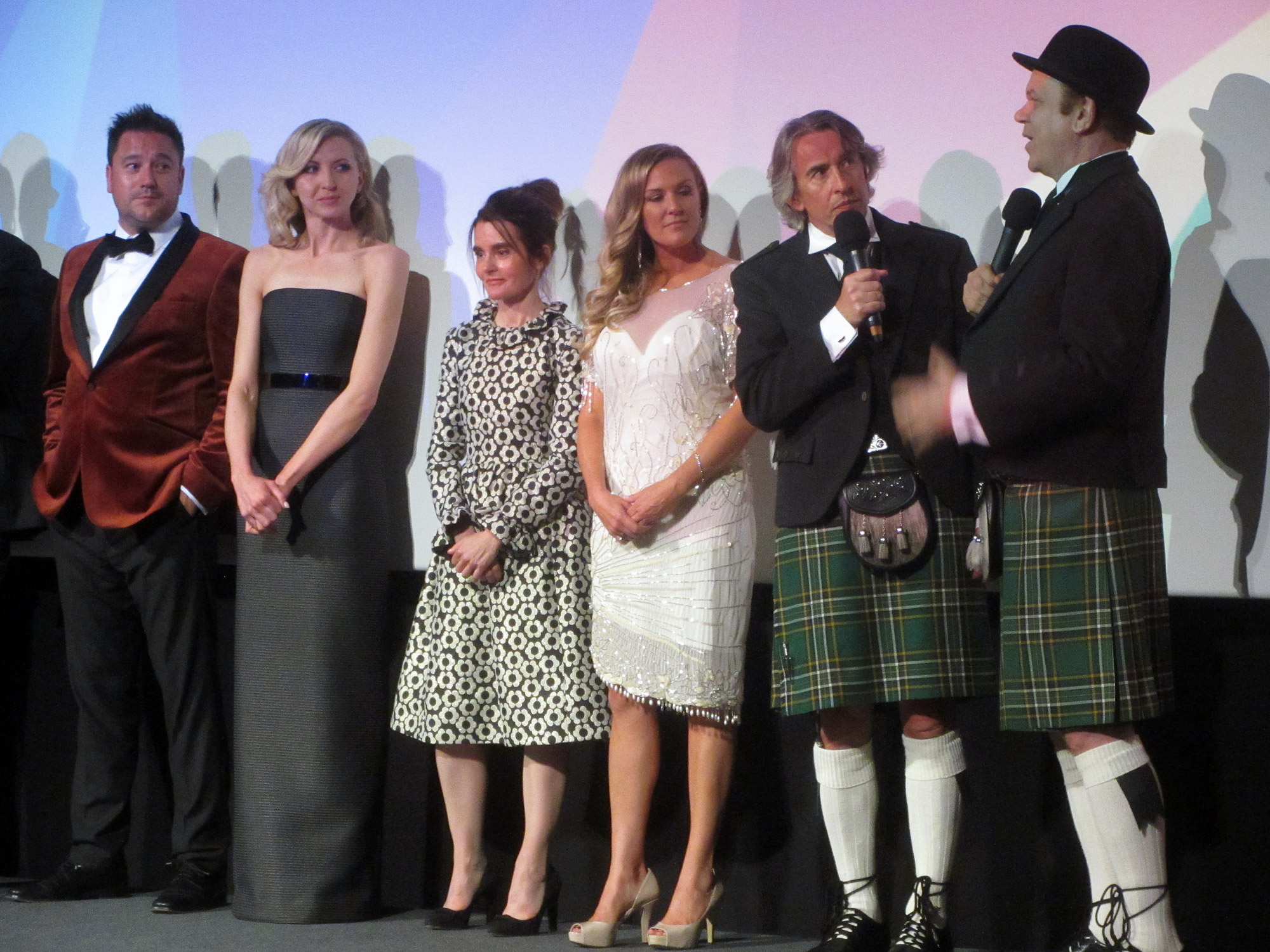
The cast of Stan & Ollie including Steve Coogan and John C. Reilly in kilts. Next to them is Stan’s great granddaughter, Cassidy Cook
Jump forward to 1950s and the pair are in England supposedly to secure the funding for a new Robin Hood film project that could reignite their careers. To pay for the trip, Bernard Delfont (Rufus Jones) has arranged a tour of regional theatres, building audiences for a short West End run. They are playing to small house and staying in run-down digs.
There’s unspoken and unresolved tension between the duo as they do their best with circumstances beneath their once elevated status.
In truth, most people can’t believe it’s really them. “Who’s playing Laurel and Hardy” asks a punter at the theatre doors.
Through hard work and many personal appearances the audiences build as they criss-cross the country. Eventually in London they are able greet their wives (in a skit) at the Savoy. But Ollie’s health is failing just as things are looking up.
Nina Arianda and Shirley Henderson are wonderful as the squabbling, protective wives. And, of course, Coogan and Reilly are remarkable.
The film is a love story between two men who became separated but were never the same apart. As we learn from the closing titles, Stan refused to work with another partner and carried on writing parts for Ollie, long after his death.
A very fine end to a wonderful festival. Roll-on next year.


